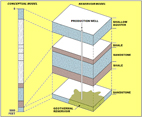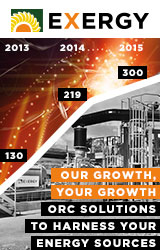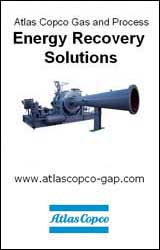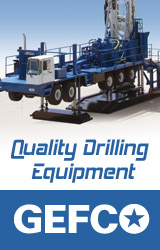Geothermal Energy: New Opportunities for Energy Independence
 Site assessment vital for geothermal production projects
Site assessment vital for geothermal production projects
Why is geothermal energy undervalued as a renewable energy source when the United States is struggling to reduce its dependence on fossil fuel? Successfully used around the world for more than a century, geothermal energy can provide a baseload of power, in contrast to the intermittent resources of wind or solar. And, with over approximately one-half the world’s existing generating capacity in the United States, a recent MIT report concluded that if all types of geothermal programs were utilized, the nation’s energy needs could be met 2,000 times over.
Still, from 1998 to 2008 geothermal energy grew at only 3% a year in the United States.
Changes are on the horizon in the geothermal energy market, however. A recent report by the Geothermal Energy Association noted that, in 2009, the total installed capacity of geothermal energy in the US grew by 6%, with a 46% growth last year in developing projects. This large increase is due to changing tax policies, regulations, and stimulus funding. Geothermal sites take approximately three to five years to develop, so a key to success is a thorough understanding of the feasibility for energy production. Conducting a comprehensive site assessment prior to site development provides developers with a technical basis for understanding the extent of potential geothermal production and project risks/rewards.
There are three primary sources of geothermal energy:
1. Dry steam reservoirs, which can provide the steam directly to a power plant;
2. Hot water reservoir used in “flash” power plants; and,
3. Lower temperature reservoirs, which produce electricity in binary (heat exchanger) system power plants. Typical depths of these formations may be as much as two miles below ground surface. Considerable challenge exists in identifying and evaluating these reservoirs. Site assessment and modeling can help identify suitable reservoirs for economically feasible geothermal production.
Site assessment is a step-wise process that begins with a review of existing data and information at the site, near-site, and regionally. This review should include existing wells, geologic reports, maps, and cross-sections. Existing wells can provide valuable information including formation penetration, open interval, bottom-hole temperature, water quality, dissolved gases (e.g. methane), and other pertinent data to assess the area and formations for geothermal production. Well logs, as well as core logs and geologic reports and studies, also provide important information with respect to lithology, structure and thickness, the identification of marker horizons, and faults that help define the extent of the reservoir. Key reservoir parameters (e.g., permeability, porosity) can be estimated from the data reviewed during this phase.
The next step in site assessment is the synthesis of the existing data into a conceptual model. This provides a consistent framework for presenting an overall understanding of the site and the potential for geothermal energy production. The key components of the conceptual site model include the structure and thickness of the reservoir, overlying and underlying formations of interest, the location and type of faults present, and key hydraulic properties such as permeability, porosity, and temperature. The conceptual site model can also identify data gaps and help direct future data collection activities at the site.
Initially, simple volumetric assessments can be made on the reservoir to provide a gross estimate of energy capacity in a reservoir. A more rigorous assessment method involves the use of a reservoir simulation model to better understand the size of the geothermal resource. This includes incorporating the geometry and hydraulic properties of the reservoir(s) being analyzed (calibrated to existing data, if available). The reservoir model domain should be large enough to predict long-term trends of the geothermal resource at a project/regional scale, but should also be local in scale (e.g. refined grid spacing) to assess and predict shorter-term responses and local features (e.g. production/re-injection during commercial operations, faults/fractures).
The simulation model can provide volumetric estimates of the size of the reservoir and potential storage volumes, but can also provide meaningful estimates of the sustainability of reservoir pressures during geothermal production, production capacities, temperatures, and the effects on production due to faults/fractures. Additionally, the model can be used to answer important “what-if scenarios” to evaluate the economic feasibility of geothermal development. This includes the number of wells needed to meet production goals, optimization of well locations for both production and/or re-injection (if pressure maintenance is needed), and the length of time before pressure or temperature decline renders the reservoir unproductive.
Also, in geopressured reservoirs where hydrocarbons are present, a multi-phase reservoir model can be used to make estimates of the amount of gas that can be co-produced during geothermal production operations, providing an additional source of energy. In this way, geothermal projects can provide further environmental benefits. Recent consideration on the beneficial reuse of captured carbon dioxide (CO2) as the re-injectate fluid during geothermal operations can be assessed using a multi-phase model. This beneficial reuse of CO2 can help reduce greenhouse gas emissions.
Site assessment and model simulation analysis provide a go/no-go decision on the technical merits of the geothermal production project. This type of analysis provides the investigator an excellent tool for making management decisions before committing considerable time and resources to expensive field activities (e.g. the drilling of new wells). Integrated with subsequent analysis, such as capital and operating cost analysis, cost/benefit analysis, calculation of payback period, installed cost per MWe, Levelized Cost of Energy (LCOE), and Return on Investment (ROI), will dictate if a geothermal project will move forward.
Thirteen states have over 150 geothermal power plants at various stages of development. The MIT report says the potential for geothermal energy is the US is more than 100 GW in the next 50 years. Using comprehensive site assessment tools can help economically develop this important renewable energy resource, and help reduce dependence of fossil fuels.
Tetra Tech
www.tetratech.com
Author: Jeffrey Benegar
Volume: Jan/Feb 2011











